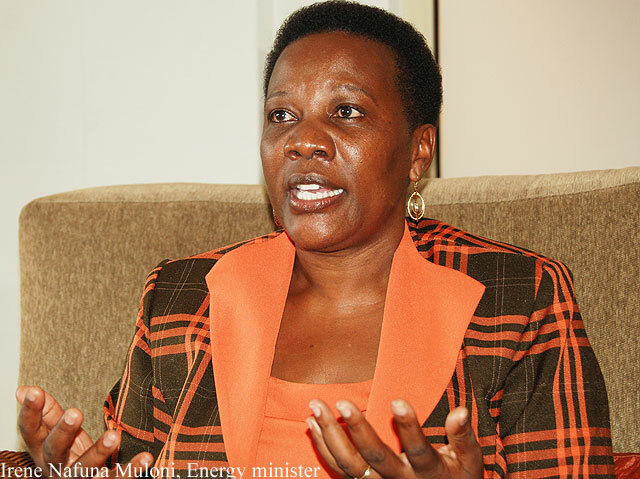Rural areas say bye to darkness. UETCL 10th Anniversary Supplement
Dec 01, 2011
The first joint sector review under the energy ministry took place on November 10 and 11, 2011 at Hotel Africana.

The first joint sector review under the energy ministry took place on November 10 and 11, 2011 at Hotel Africana. Our reporter Interviewed Eng. Irene Muloni, the Minister of Energy and Mineral Development about the energy sector and below are excerpts
Qn: What was the focus of this joint sector review?
This year’s joint sector review discussed the ministry’s performance during the last three years, but areas of emphasis were the 2011/12 and 2012/13 financial years. We also focused on strategies that will see an increase in electricity generation and expansion of the transmission network, ways to increase access to modern energy services through rural electrification and development of renewable energy, promotion and monitoring of petroleum exploration and development.
Qn: What programmes and plans have been put in place to increase energy production and consumption in the country?
There are several projects to be developed under the national development plan (NDP). The 250MW Bujagali project is near completion, the 600MW Karuma dam, the 140MW Isimba plant and the 600MW Ayago dam. We anticipate that the construction of Karuma dam will commence in May 2012 since the environmental impact assessment was completed. Our target is to have a total generation capacity of 3,885MW hydropower development. Other plans under NDP include the study, design and construction of Ariranga hydropower plant to generate 400MW.
The ministry is also promoting the use of renewable energy. We have plans to design and construct solar thermal plants to generate 200MW and also increase the co-generation capacity to 150MW.
Qn: There has been a public outcry about the rate of load shedding. What has the ministry done to reduce it?
Electricity is an essential service to all Ugandans and the current load shedding is undesirable.
However, the public needs to be patient and should know that the ministry is committed to minimising load shedding. The challenge is that before we deliver a service, there is an investment that usually takes time, for example the construction of a dam.
We hope that in the near future all planned projects will be able to restore the situation to normality.

Qn: In relation to the rural electrification strategy and plan that was meant to cover a period of 2001/2010, what were the achievements?
The establishment of this project realised over 3,000km of medium voltage networks and 2,500km of low voltage networks being commissioned. So far, over 10 district headquarters of Kanungu, Kibale, Pader, Abim, Agago, Lamwo, Bundibugyo, Isingiro, Oyam and Kalangala have been electrified.
This project extended electricity supply to over 230 community initiated projects like small and medium enterprises, health centres, education institutions, water supply schemes, trading centres and villages.
Currently, the national electrification rate stands at 12% with a 6% rural electrification rate, but the Government is adapting to the end user subsidy model to accelerate rural connections.
Also, the output based aid programme is expected to commence in January 2012 and will benefit wired households within a 30 metre no-pole services range by providing connection subsidy of up to $160.
Qn: There are media reports that the capacity of Bujagali dam was exaggerated. Is this true?
It is not true that the capacity of the dam was exaggerated because the dam was constructed after a feasibility study by experts. Usually, a dam is constructed to generate a given maximum amount of power. In this case, Bujagali was constructed to generate a maximum capacity of 250MW.
However, the amount of power it can generate depends on the amount of water available at the dam. What this means is that the dam can generate varying amount of power depending on the desired need and the amount of water available at the dam.
Qn: What key challenges is the ministry facing?
One of the key challenges is that the power sector is that of low access of electricity, high tariffs and subsidies and low generation capacity.
There is need to avoid delay in the development of power generation projects. The management of people’s expectations, especially the demand for revenue from oil when there is no product yet and the increasing interests in the sector is another major challenge.
